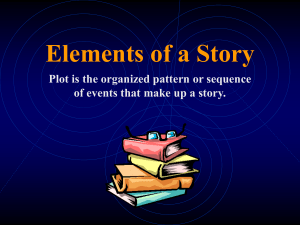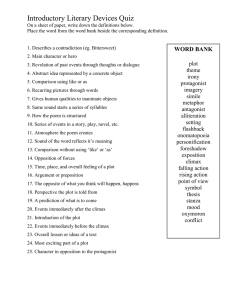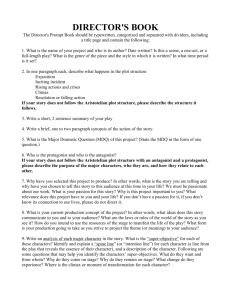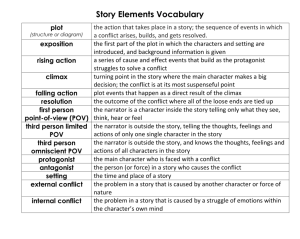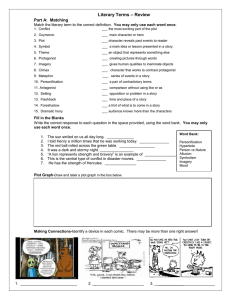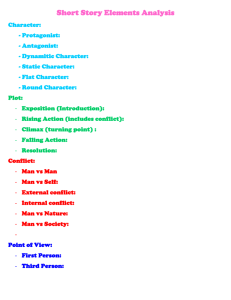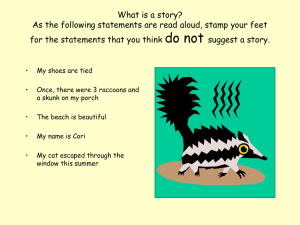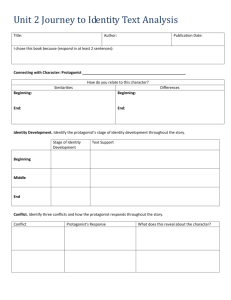the study guide .
advertisement
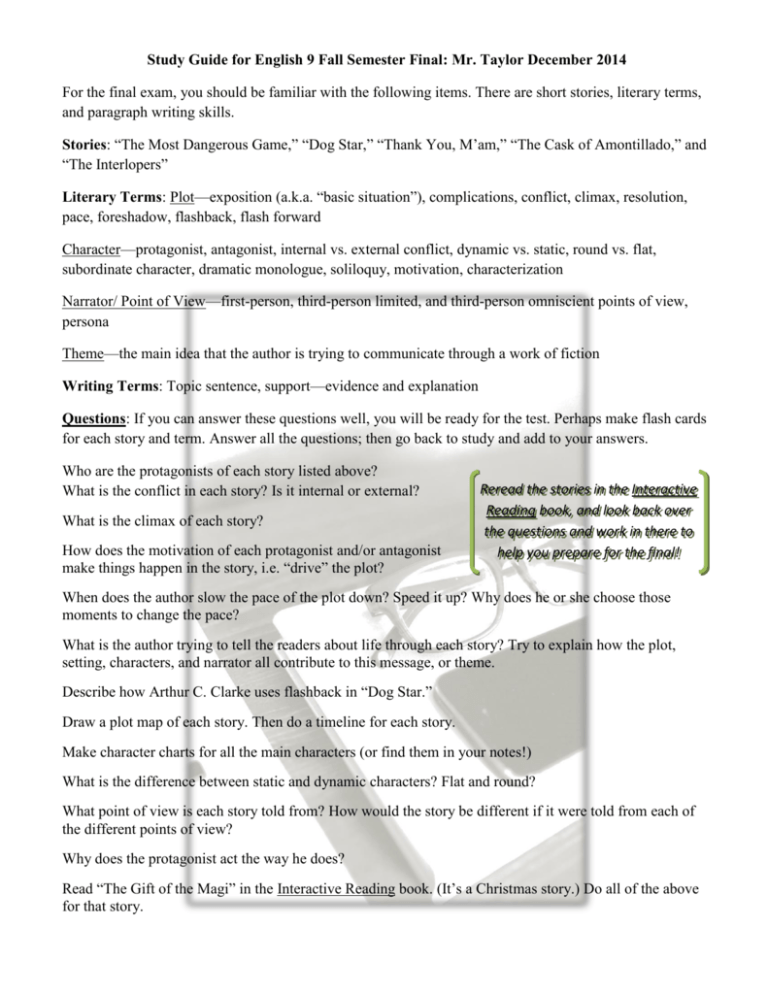
Study Guide for English 9 Fall Semester Final: Mr. Taylor December 2014 For the final exam, you should be familiar with the following items. There are short stories, literary terms, and paragraph writing skills. Stories: “The Most Dangerous Game,” “Dog Star,” “Thank You, M’am,” “The Cask of Amontillado,” and “The Interlopers” Literary Terms: Plot—exposition (a.k.a. “basic situation”), complications, conflict, climax, resolution, pace, foreshadow, flashback, flash forward Character—protagonist, antagonist, internal vs. external conflict, dynamic vs. static, round vs. flat, subordinate character, dramatic monologue, soliloquy, motivation, characterization Narrator/ Point of View—first-person, third-person limited, and third-person omniscient points of view, persona Theme—the main idea that the author is trying to communicate through a work of fiction Writing Terms: Topic sentence, support—evidence and explanation Questions: If you can answer these questions well, you will be ready for the test. Perhaps make flash cards for each story and term. Answer all the questions; then go back to study and add to your answers. Who are the protagonists of each story listed above? What is the conflict in each story? Is it internal or external? What is the climax of each story? How does the motivation of each protagonist and/or antagonist make things happen in the story, i.e. “drive” the plot? Reread the stories in the Interactive Reading book, and look back over the questions and work in there to help you prepare for the final! When does the author slow the pace of the plot down? Speed it up? Why does he or she choose those moments to change the pace? What is the author trying to tell the readers about life through each story? Try to explain how the plot, setting, characters, and narrator all contribute to this message, or theme. Describe how Arthur C. Clarke uses flashback in “Dog Star.” Draw a plot map of each story. Then do a timeline for each story. Make character charts for all the main characters (or find them in your notes!) What is the difference between static and dynamic characters? Flat and round? What point of view is each story told from? How would the story be different if it were told from each of the different points of view? Why does the protagonist act the way he does? Read “The Gift of the Magi” in the Interactive Reading book. (It’s a Christmas story.) Do all of the above for that story.
